Abstract
Peritoneal macrophages from guinea pigs vaccinated with strain Rev I of Brucella melitensis were only moderately activated thereby to limit, in an in vitro system, the intracellular growth of Rev I bacilli. Nevertheless, the appropriate memory cells had been primed, as demonstrated by the observation that reinfection of animals with virulent B. melitensis followed by intraperitoneal inoculation of mineral oil called forth macrophages in immunized guinea pigs which inhibited strongly the intracellular growth of brucellae. These macrophages slowed the growth of brucellae in the absence of immune serum. The intensity of the recall response was related to the challenge route and to the virulence of the challenge strain. After equal doses of attenuated or virulent brucellae, resistance was highest in macrophages recalled by the virulent strain. An important basis for the attenuation of the Rev I strain may lie in its initially low degree of macrophage activation during primary infection, although still retaining the capacity to prime stem cells. This property is associated with a protein found in fraction I, because 600 μg/ml in Freund's adjuvant primed guinea pigs so that challenge by strain 6015 evoked activated macrophages. This was seen microscopically as a reduced spread of infection in and amongst the macrophage population. Immune serum further reduced this spread and limited the number of viable intracellular brucellae.
Full text
PDF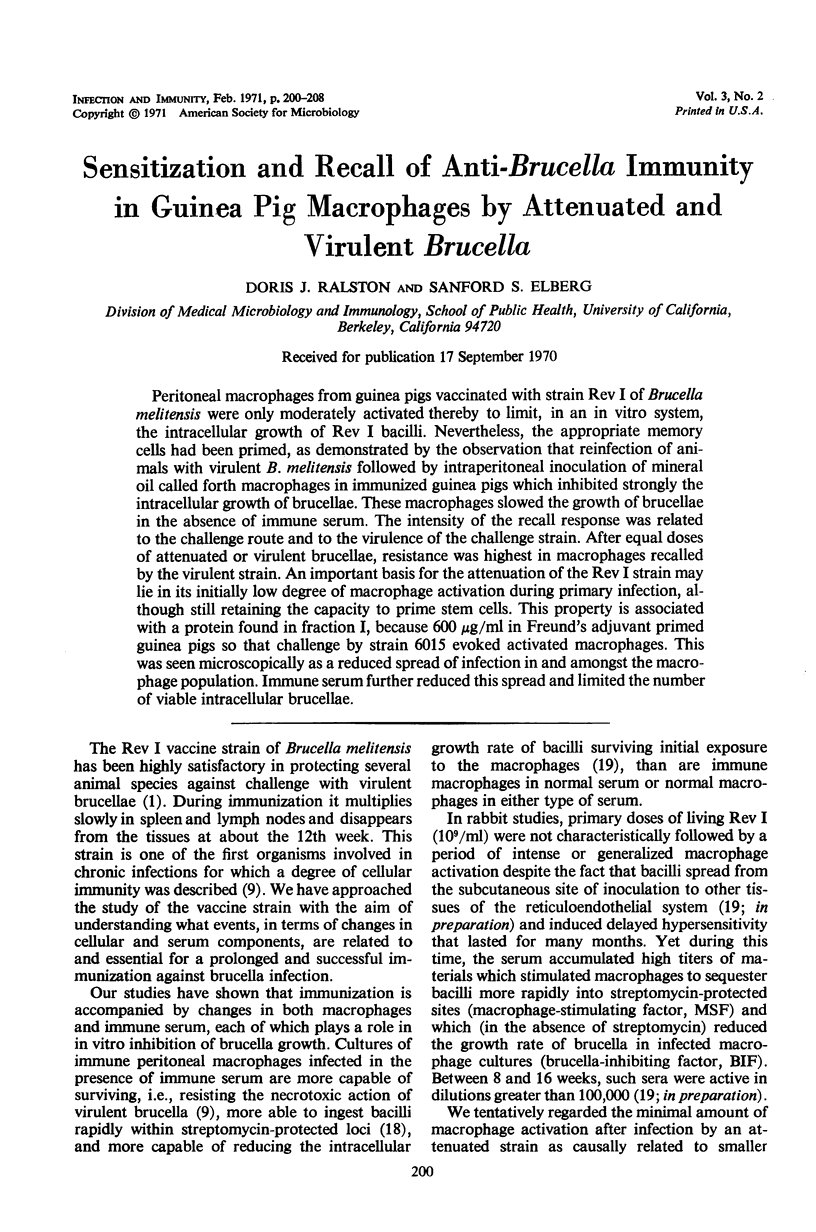
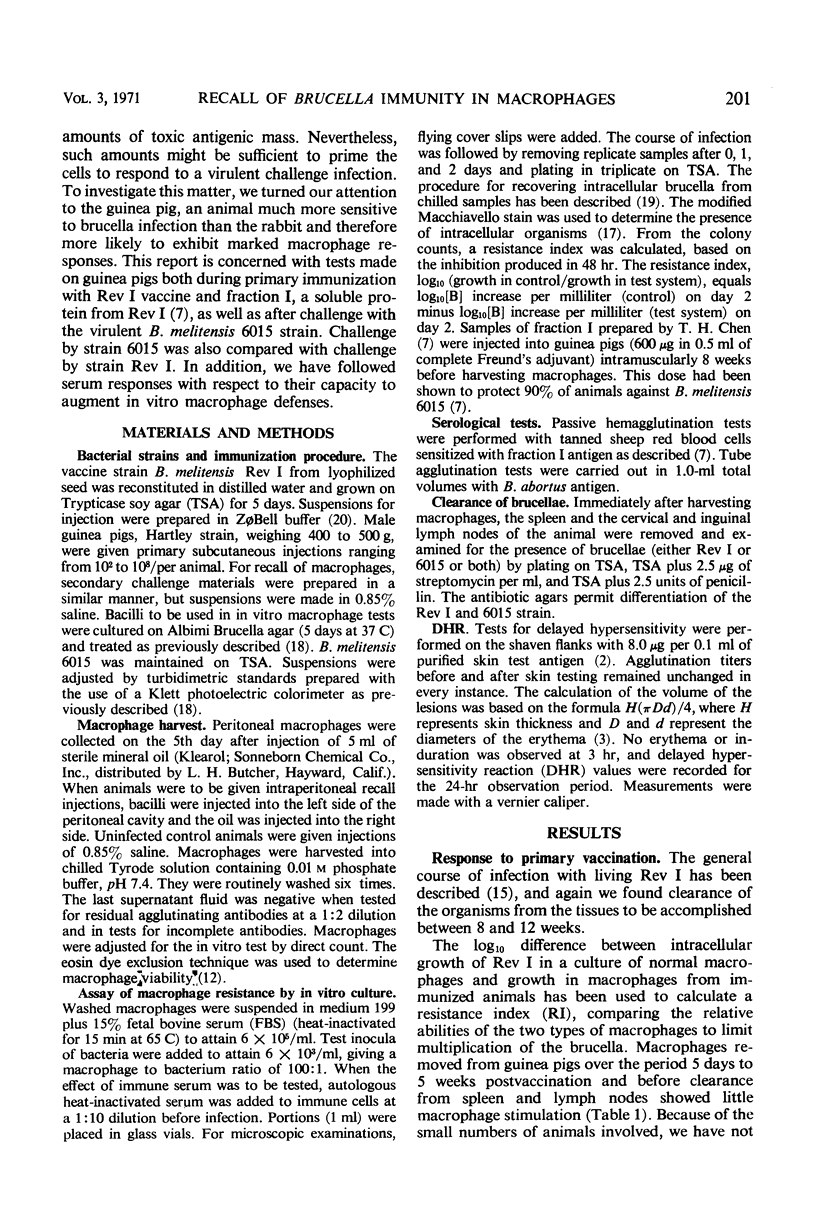
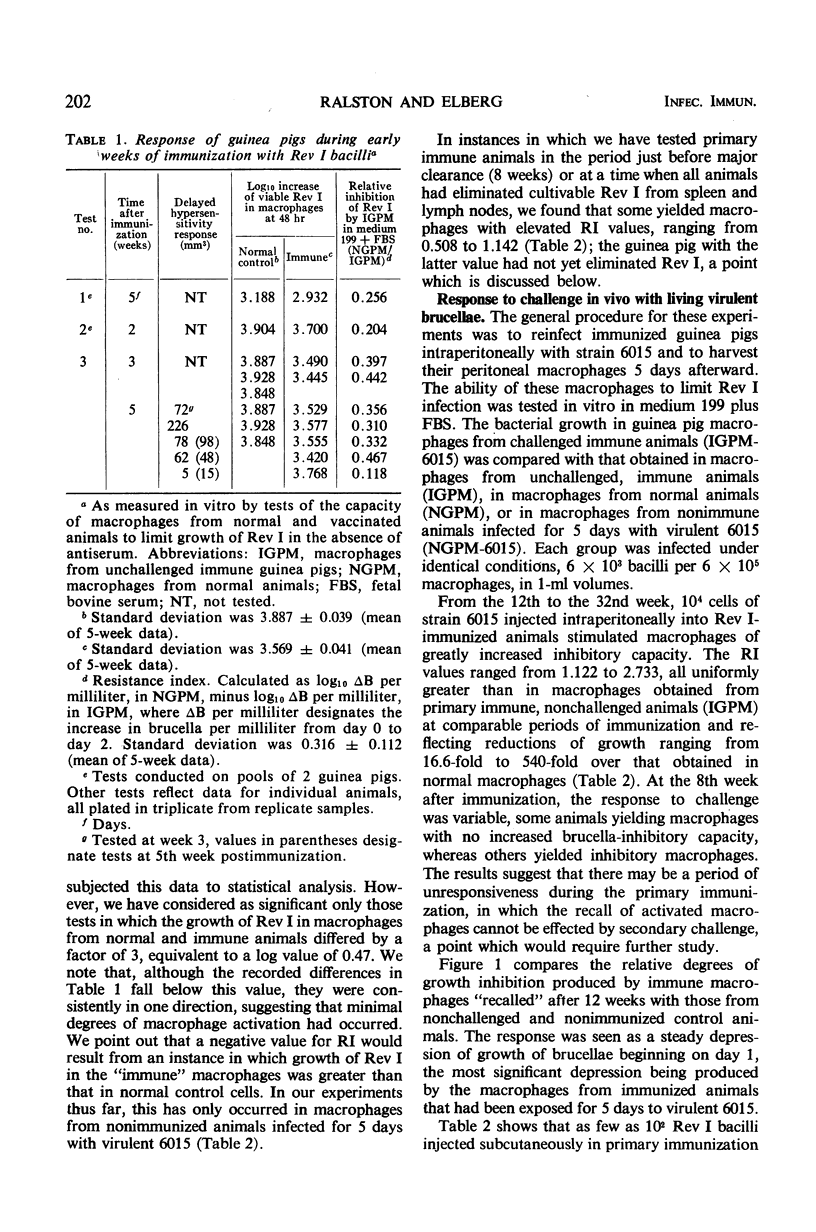
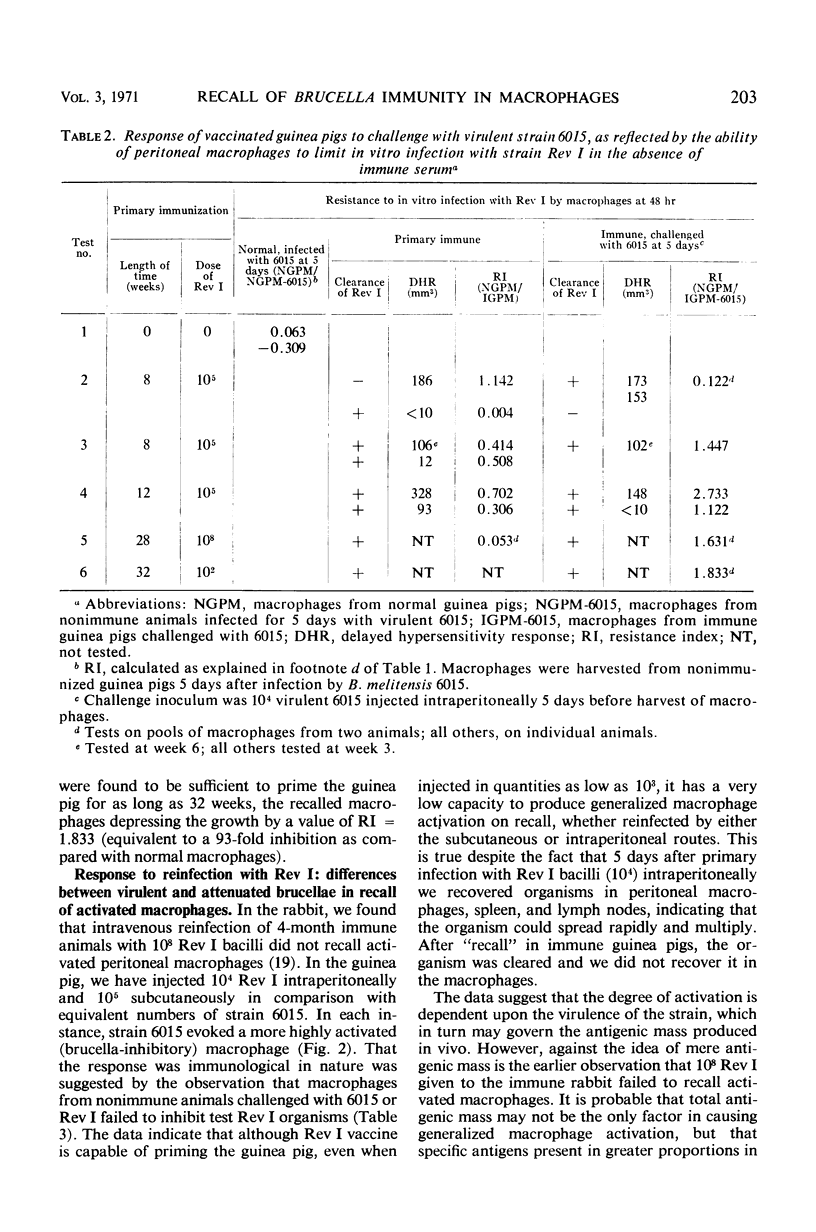
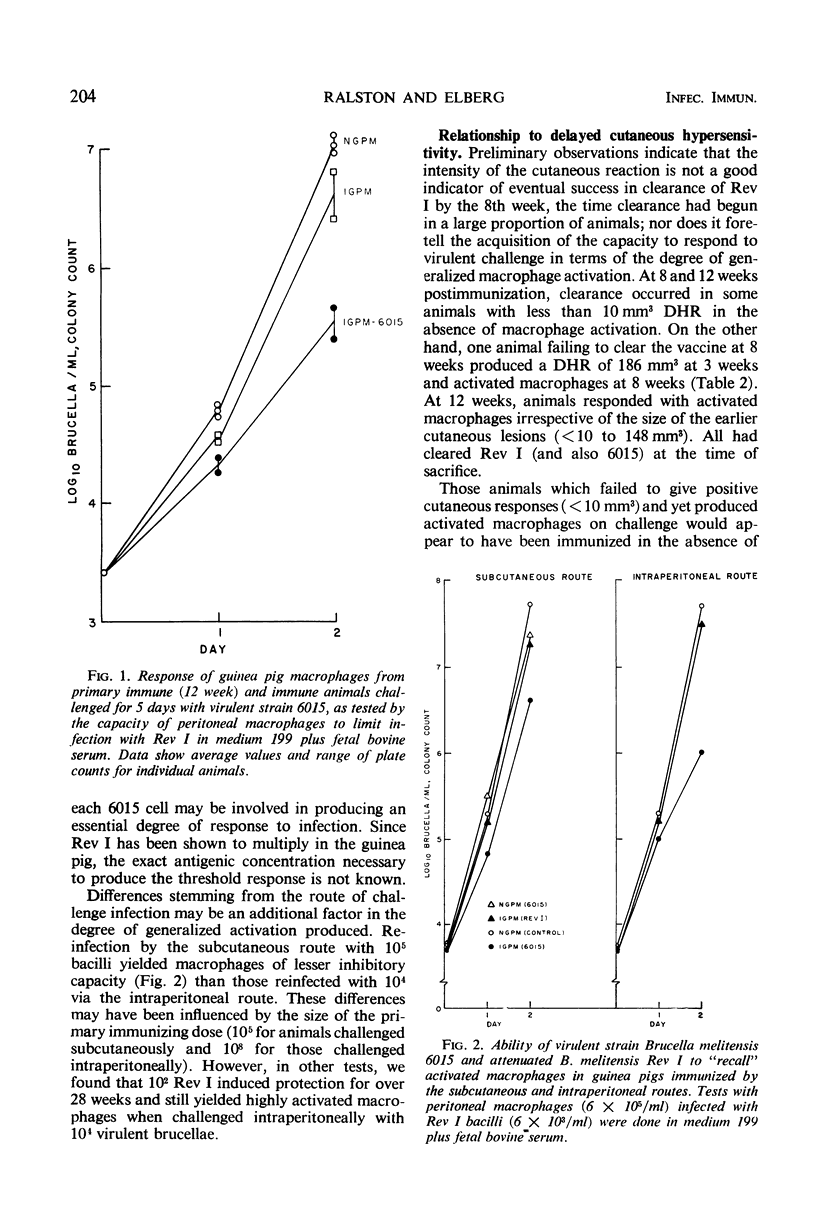
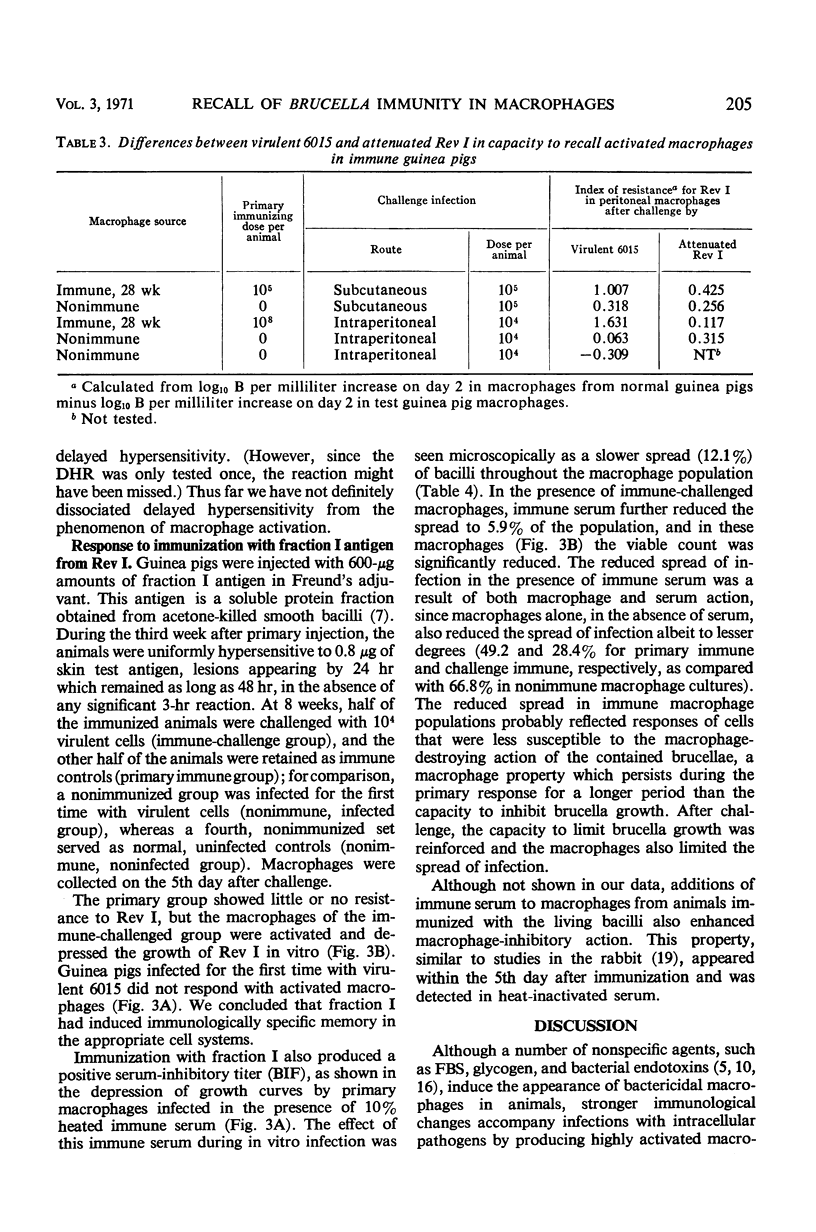
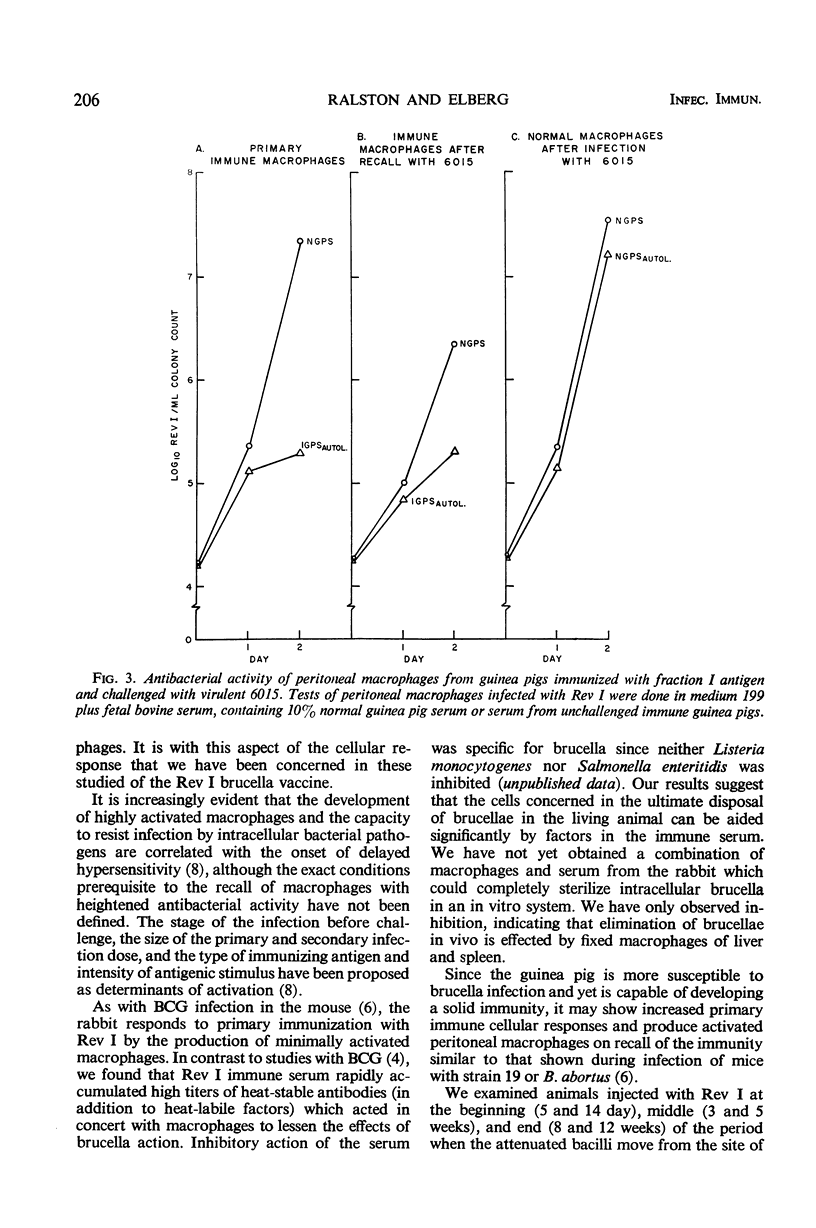
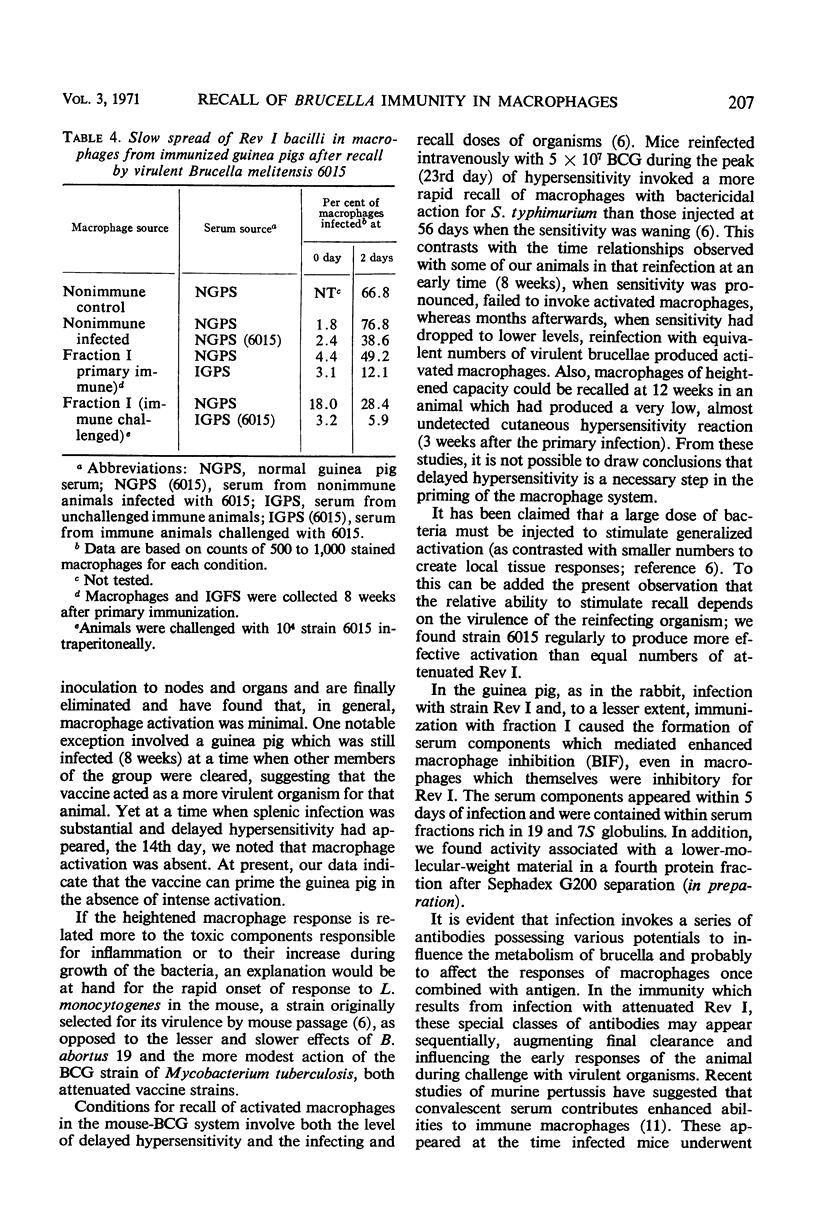

Selected References
These references are in PubMed. This may not be the complete list of references from this article.
- BENEDICT A. A., ELBERG S. S. Cutaneous hypersensitivity in brucellosis. II. Chromatographic studies on the skin-test antigen. J Immunol. 1953 Feb;70(2):165–170. [PubMed] [Google Scholar]
- Bhongbhibhat N., Elberg S., Chen T. H. Characterization of brucella skin-test antigens. J Infect Dis. 1970 Jul-Aug;122(1):70–82. doi: 10.1093/infdis/122.1-2.70. [DOI] [PubMed] [Google Scholar]
- Blanden R. V., Lefford M. J., Mackaness G. B. The host response to Calmette-Guérin bacillus infection in mice. J Exp Med. 1969 May 1;129(5):1079–1107. doi: 10.1084/jem.129.5.1079. [DOI] [PMC free article] [PubMed] [Google Scholar]
- Blanden R. V. Modification of macrophage function. J Reticuloendothel Soc. 1968 Jun;5(3):179–202. [PubMed] [Google Scholar]
- Chen T. H., Elberg S. S. Immunization against Brucella infections: serological and immunological studies on a soluble antigen from Brucella melitensis. J Infect Dis. 1969 Aug;120(2):143–152. doi: 10.1093/infdis/120.2.143. [DOI] [PubMed] [Google Scholar]
- Dannenberg A. M., Jr Cellular hypersensitivity and cellular immunity in the pathogensis of tuberculosis: specificity, systemic and local nature, and associated macrophage enzymes. Bacteriol Rev. 1968 Jun;32(2):85–102. doi: 10.1128/br.32.2.85-102.1968. [DOI] [PMC free article] [PubMed] [Google Scholar]
- ELBERG S. S., SCHNEIDER P., FONG J. Cross-immunity between Brucella melitensis and Mycobacterium tuberculosis; intracellular behavior of Brucella melitensis in monocytes from vaccinated animals. J Exp Med. 1957 Oct 1;106(4):545–554. doi: 10.1084/jem.106.4.545. [DOI] [PMC free article] [PubMed] [Google Scholar]
- Fauve R. M., Delaunay A. Résistance cellulaire à l'infection bactérienne. 3. Modifications de la résistance de souris NCS à l'infection par Listeria monocytogenes après injection d'endotoxine. Effets comparés d'une injection d'endotoxine et d'une immunisation active sur l'aspect morphologique et la résistance cellulaire à l'infection des macrophages de souris NCS. Ann Inst Pasteur (Paris) 1966 Mar;110(3 Suppl):95–105. [PubMed] [Google Scholar]
- Gray D. F., Cheers C. The sequence of enhanced cellular activity and protective humoral factors in murine pertussis immunity. Immunology. 1969 Dec;17(6):889–896. [PMC free article] [PubMed] [Google Scholar]
- HANKS J. H., WALLACE J. H. Determination of cell viability. Proc Soc Exp Biol Med. 1958 May;98(1):188–192. doi: 10.3181/00379727-98-23985. [DOI] [PubMed] [Google Scholar]
- JENKIN C. R., ROWLEY D., AUZINS I. THE BASIS FOR IMMUNITY TO MOUSE TYPHOID. I. THE CARRIER STATE. Aust J Exp Biol Med Sci. 1964 Apr;42:215–228. doi: 10.1038/icb.1964.23. [DOI] [PubMed] [Google Scholar]
- MACKANESS G. B. THE IMMUNOLOGICAL BASIS OF ACQUIRED CELLULAR RESISTANCE. J Exp Med. 1964 Jul 1;120:105–120. doi: 10.1084/jem.120.1.105. [DOI] [PMC free article] [PubMed] [Google Scholar]
- McCamish J., Elberg S. S. Immunization Against Brucella Infection: IX. The Response of the Guinea Pig to the Immunizing Strain (Rev. 1) of Brucella melitensis. Am J Pathol. 1962 Jan;40(1):77–93. [PMC free article] [PubMed] [Google Scholar]
- Patterson R. J., Youmans G. P. Multiplication of Mycobacterium tuberculosis Within Normal and "Immune" Mouse Macrophages Cultivated With and Without Streptomycin. Infect Immun. 1970 Jan;1(1):30–40. doi: 10.1128/iai.1.1.30-40.1970. [DOI] [PMC free article] [PubMed] [Google Scholar]
- RALSTON D. J., ELBERG S. S. Intramonocytic destruction of Brucella: potentiating effect of glycine on intracellular lysozyme activity. J Infect Dis. 1961 Jul-Aug;109:71–80. doi: 10.1093/infdis/109.1.71. [DOI] [PubMed] [Google Scholar]
- Ralston D. J., Elberg S. S. Serum-mediated immune cellular responses to Brucella melitensis REV 1. II. Restriction of Brucella by immune sera and macrophages. J Reticuloendothel Soc. 1969 Apr;6(2):109–139. [PubMed] [Google Scholar]
- Ralston D. J., Elberg S. S. Serum-mediated immune cellular responses to Brucella melitensis. I. Role of a macrophage-stimulating factor in promoting ingestion of Brucella by streptomycin-protected cells. J Bacteriol. 1968 Jul;96(1):24–38. doi: 10.1128/jb.96.1.24-38.1968. [DOI] [PMC free article] [PubMed] [Google Scholar]


